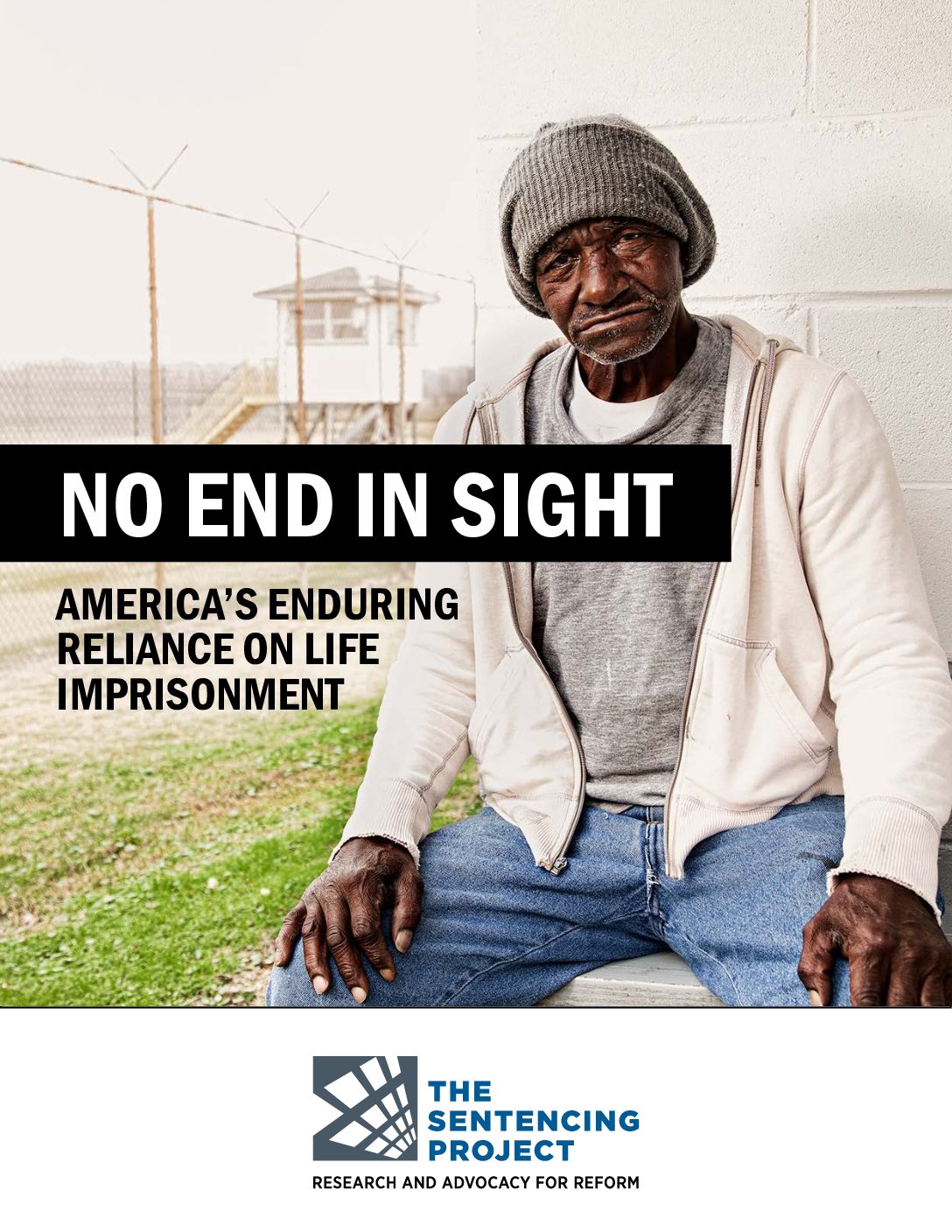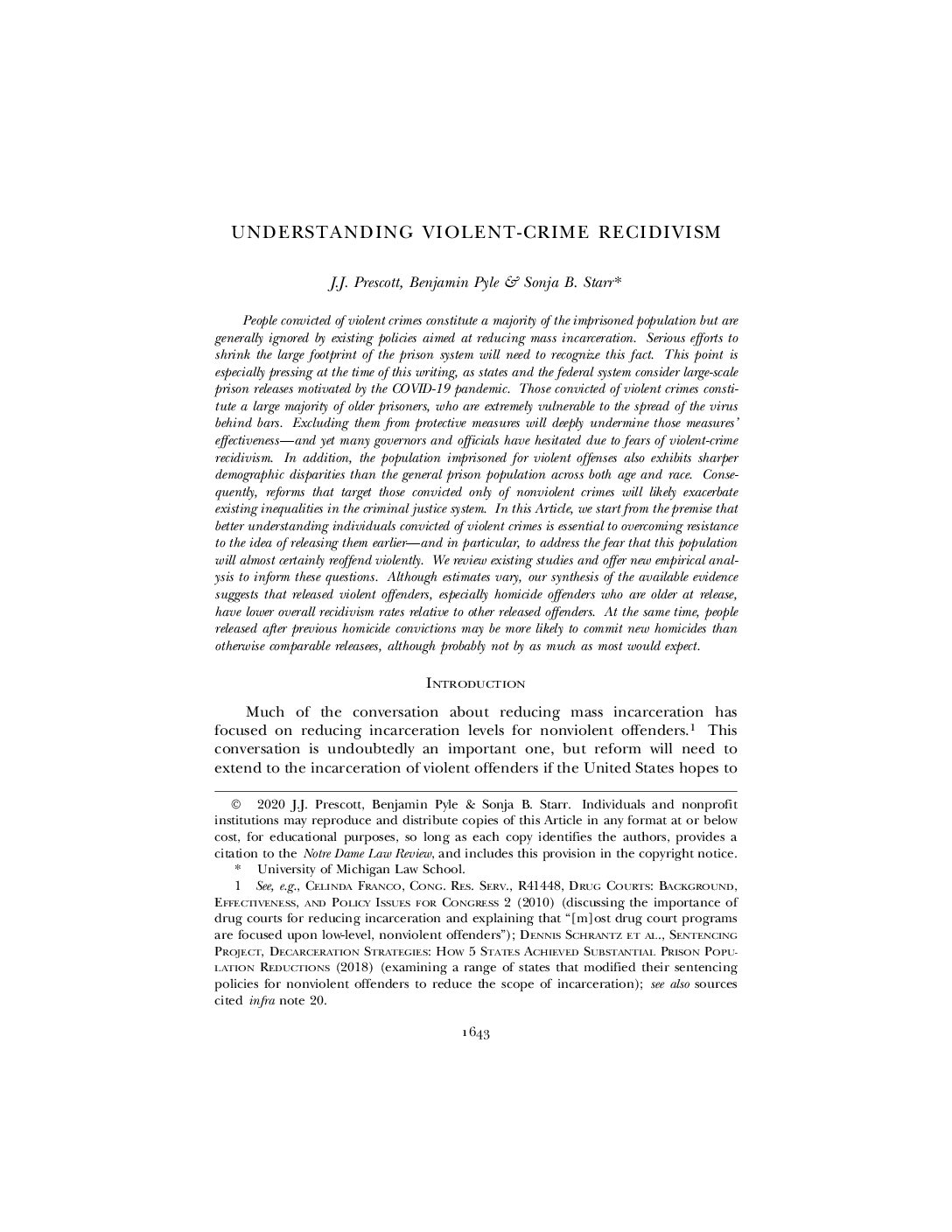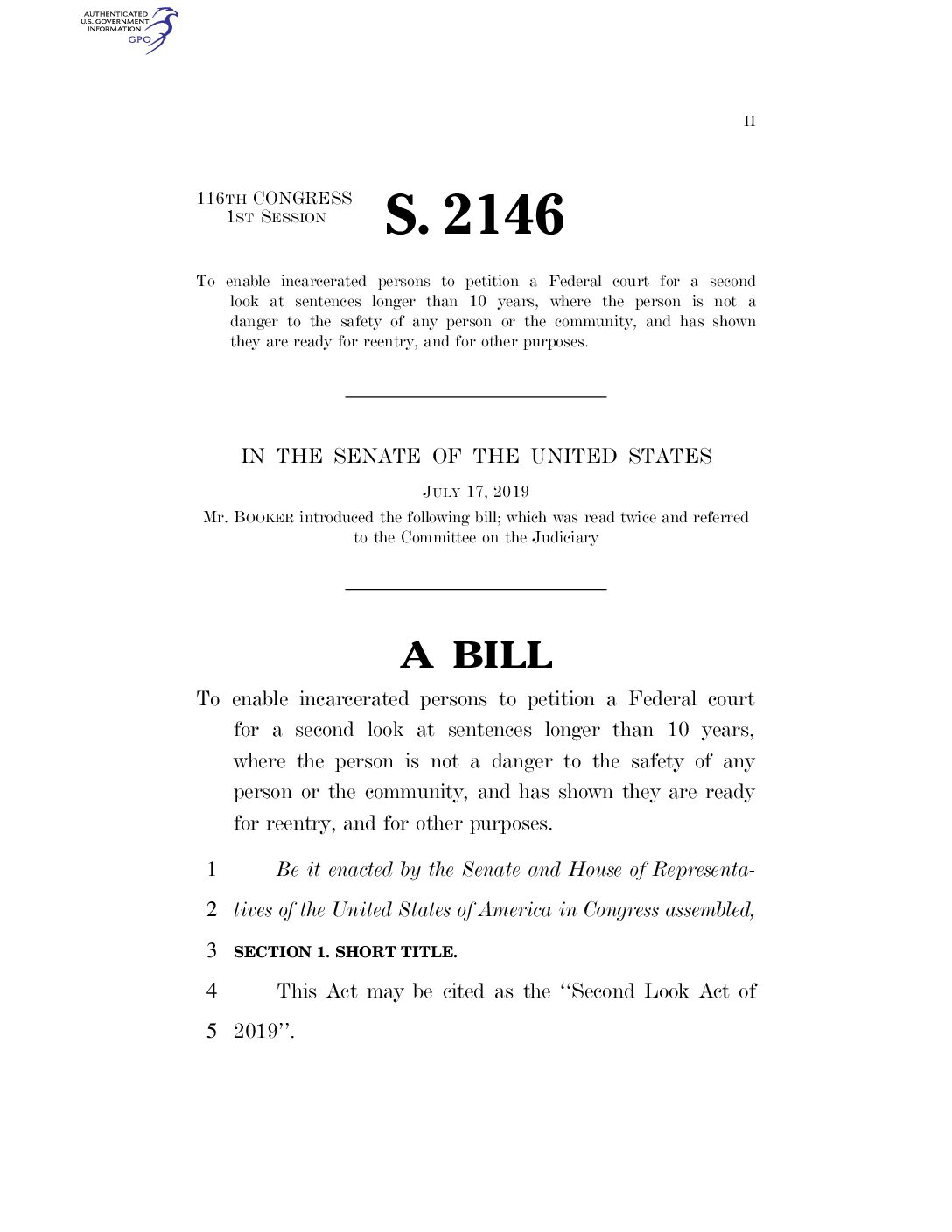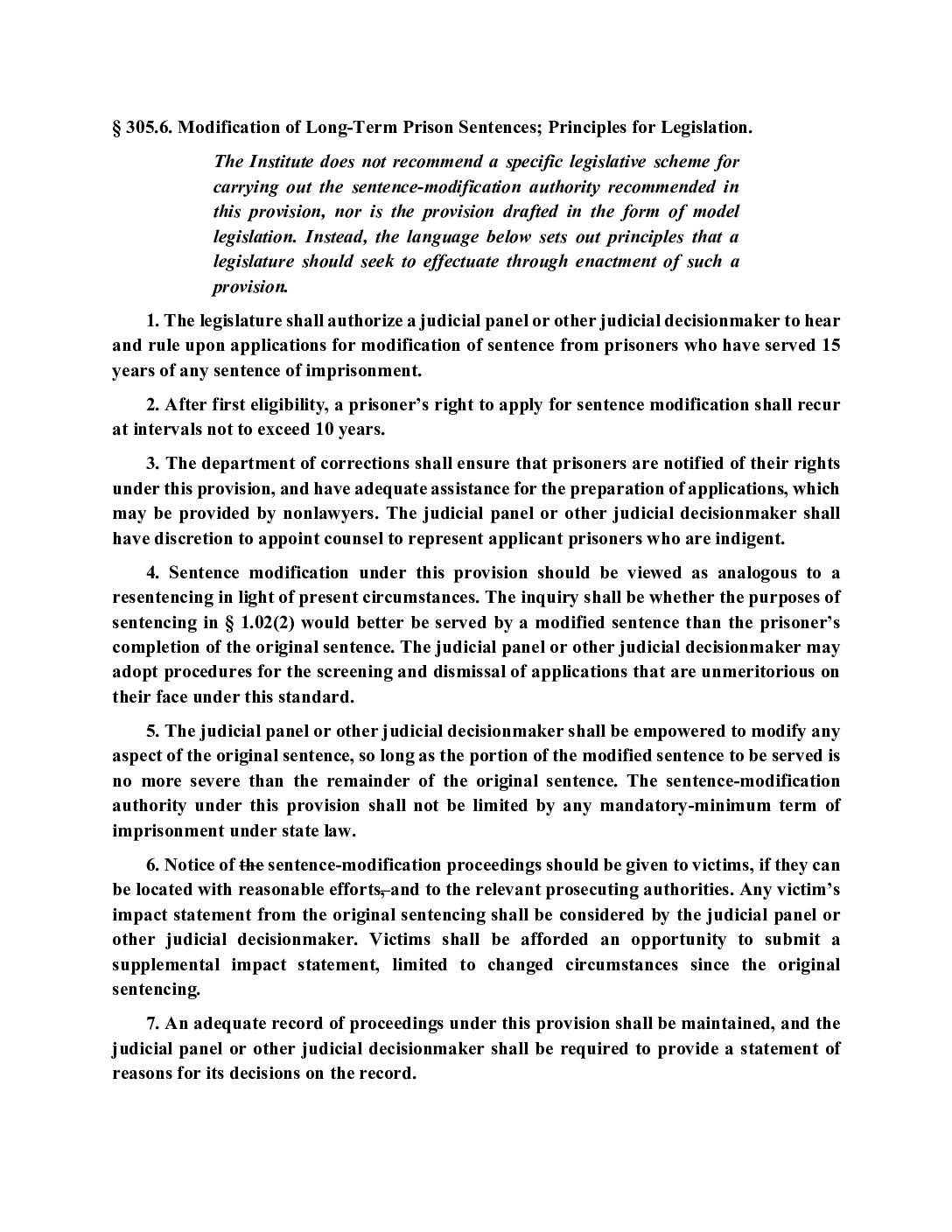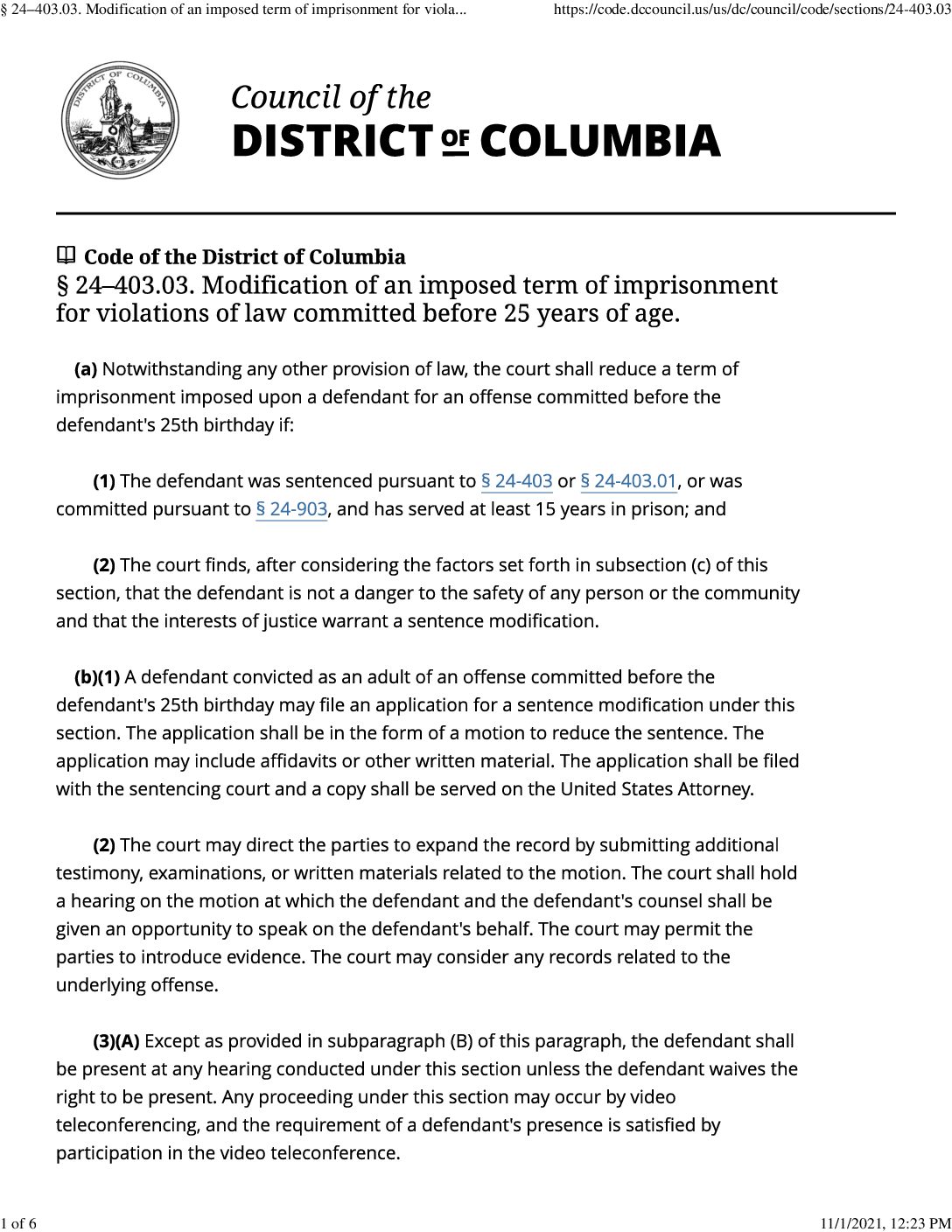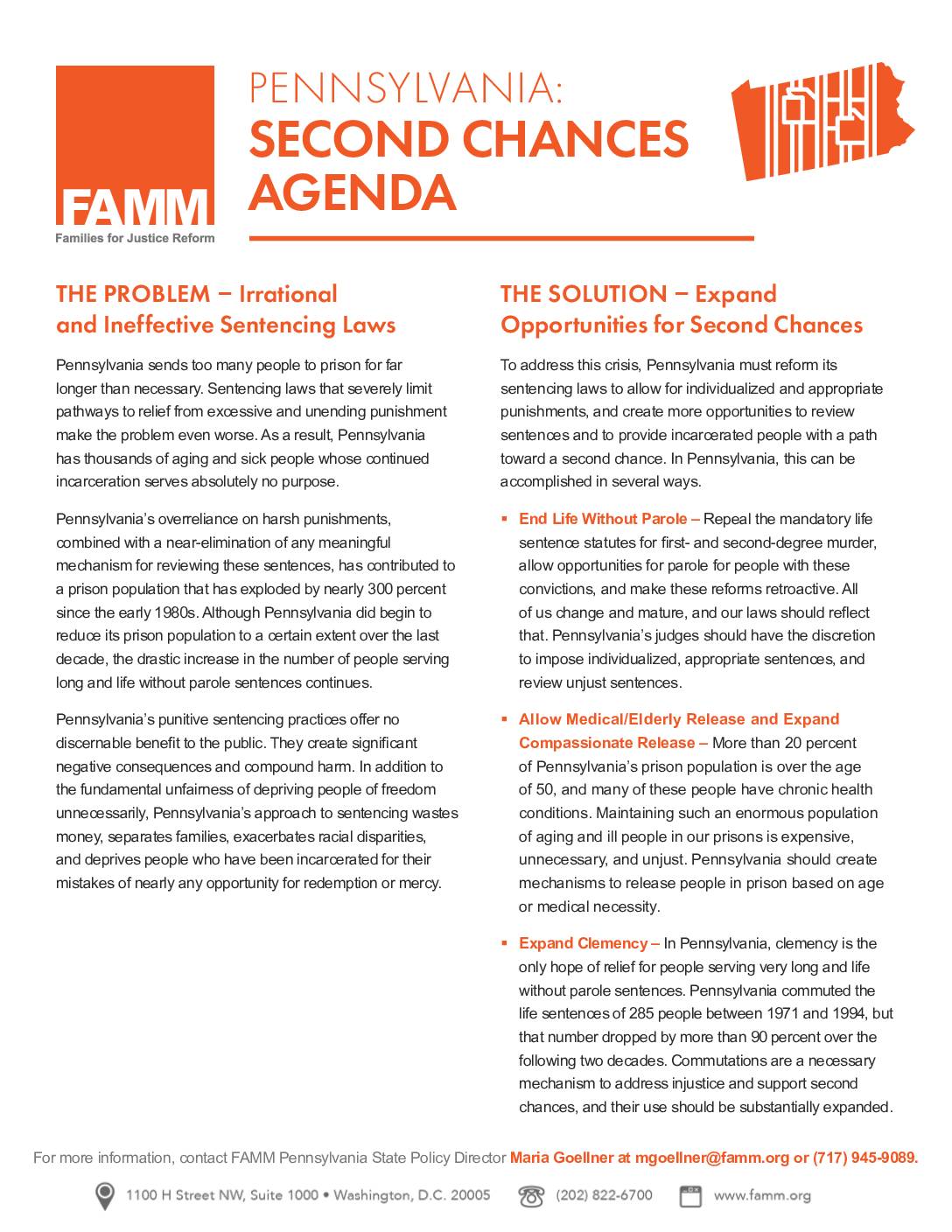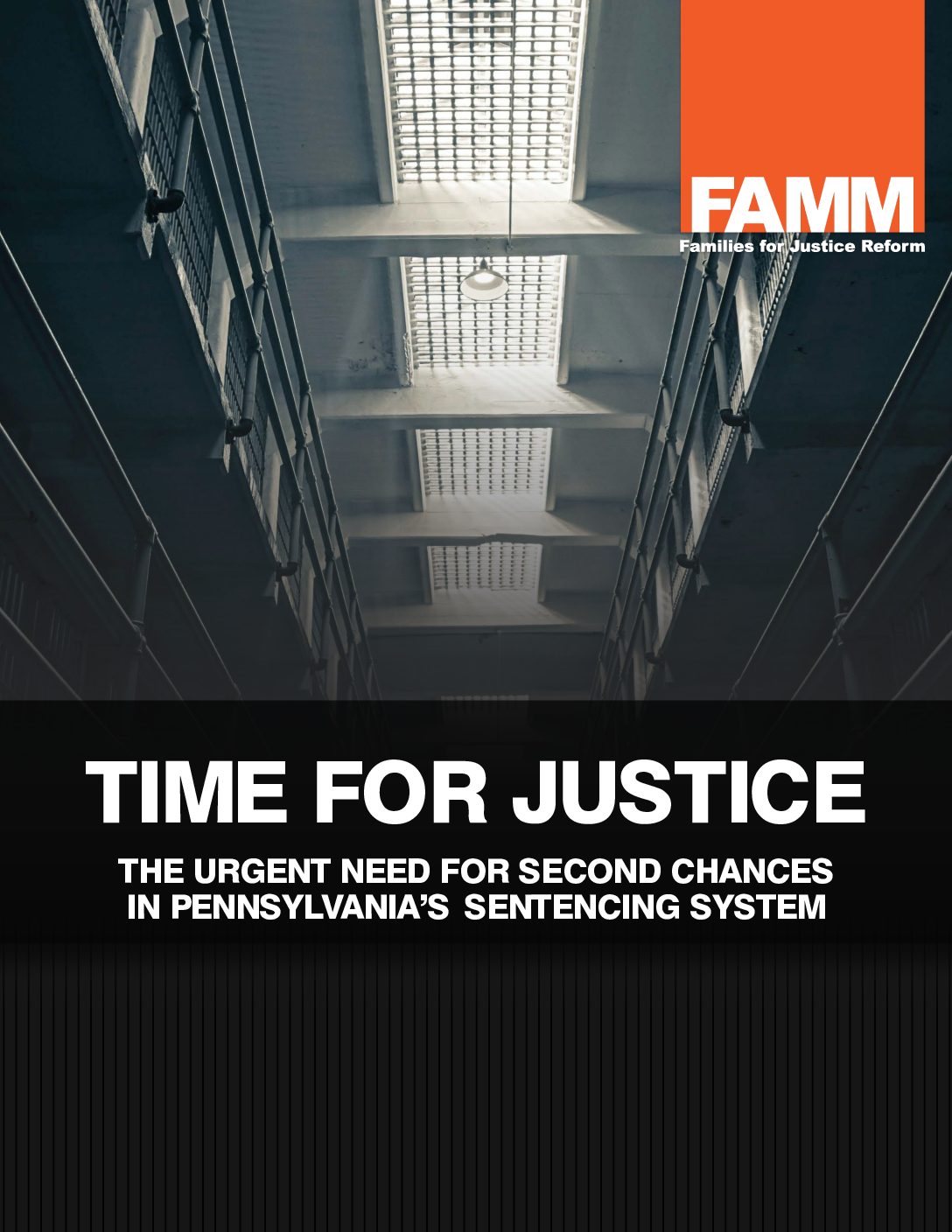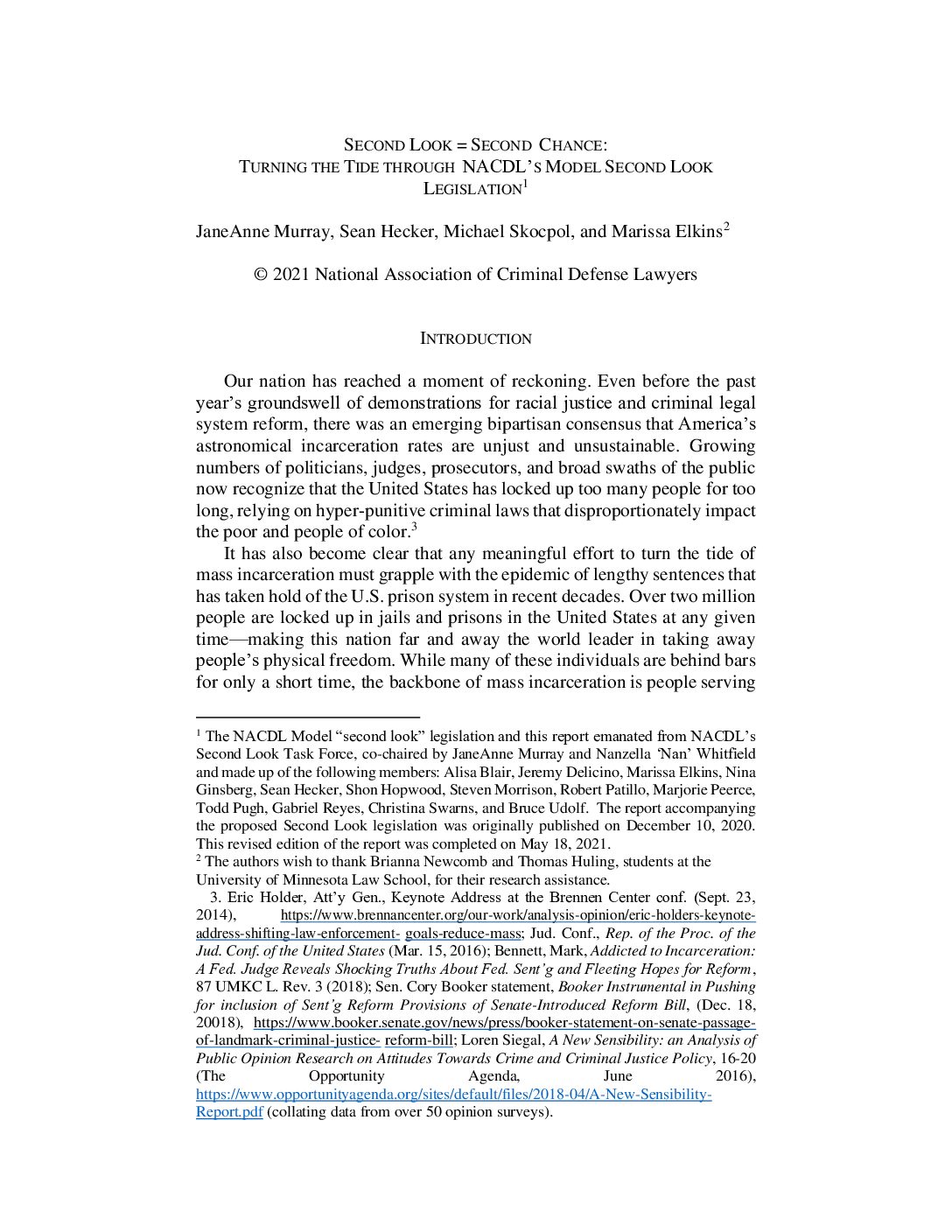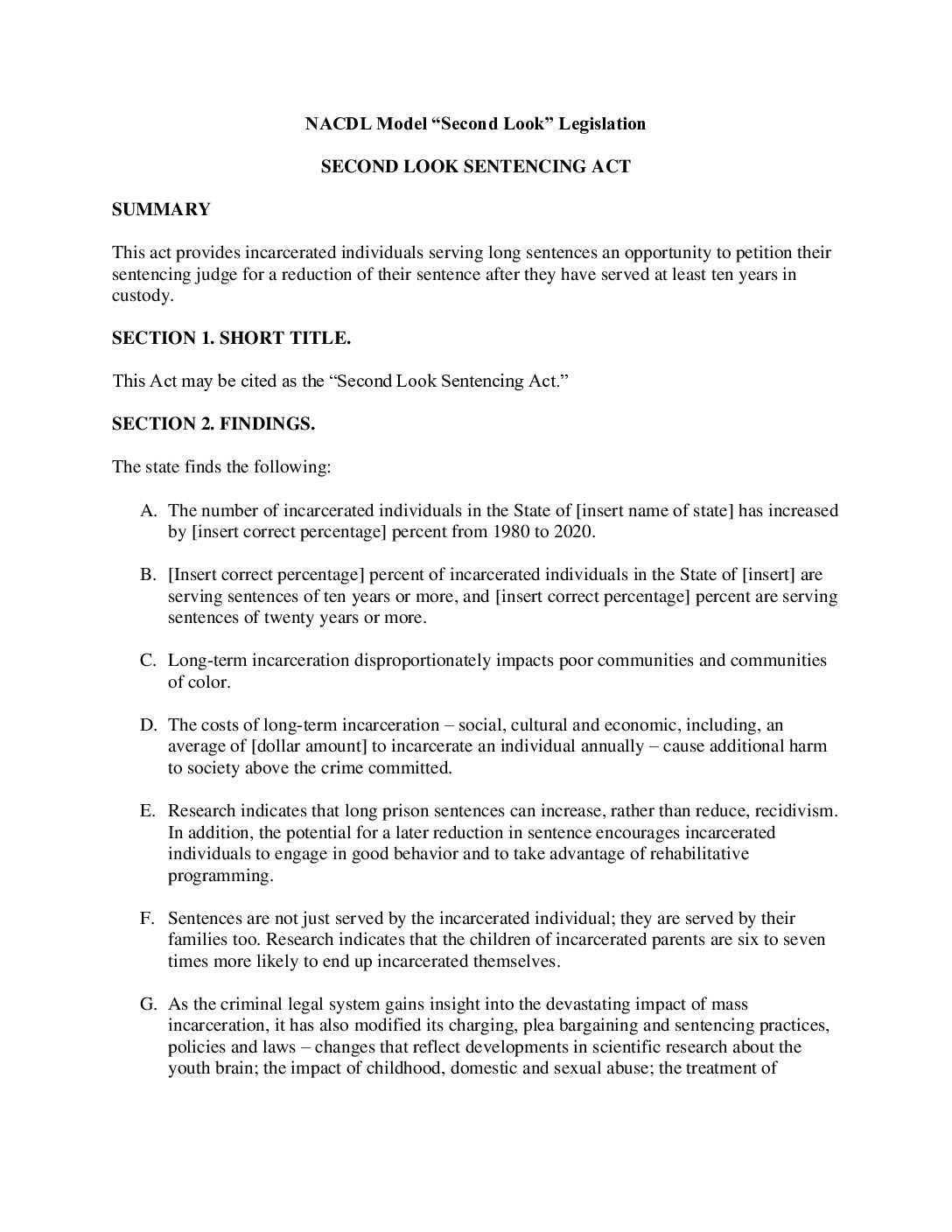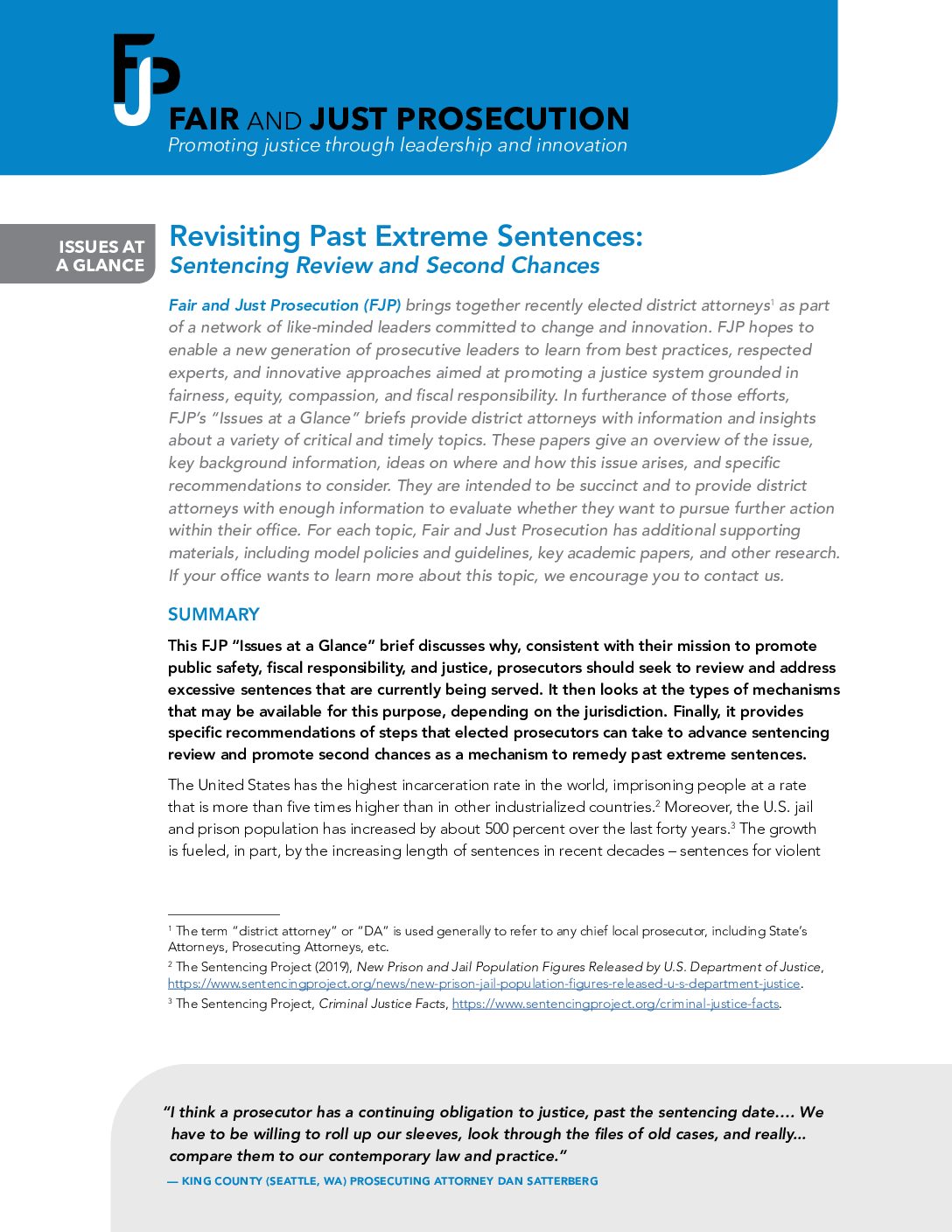PDF No End In Sight: America’s Enduring Reliance on Life Imprisonment
In 2020, The Sentencing Project obtained official corrections data from all states and the Federal Bureau of Prisons to produce their 5th national census on life imprisonment. Key findings include: One in 7 people in U.S. prisons is serving a life sentence or virtual life (50 years or more); 30% of lifers are 55 years or older; and more than two-thirds of those serving life sentences are people of color.


